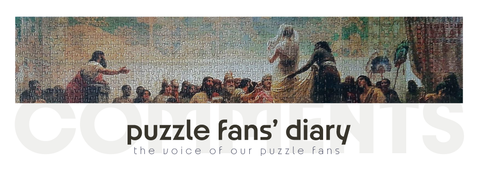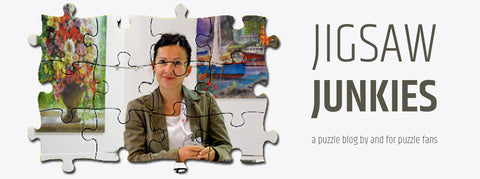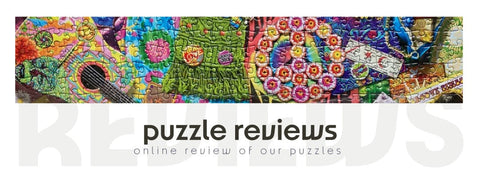The Babylonian Marriage Market by Edwin L. Long (Anatolian, 1500 pieces - panorama)
This stunning image is Edwin L. Long's 1875 painting, The Babylonian Marriage Market, which currently hangs in the gallery of Royal Holloway College, London.

This work is both a commentary on progressive Victorian marriage legislation which allowed brides to retain their own property upon marriage, and Long's interpretation of a passage from Herodotus' Histories, Book 1:
"In every village once a year all the girls of marriageable age used to be collected together in one place, while the men stood round them in a circle; an auctioneer called each one in turn to stand up and offered her for sale, beginning with the best-looking and going on to the second-best as soon as the first had been sold for a good price. Marriage was the object of the transaction. The rich men who wanted wives bid against each other for the prettiest girls while the humbler folk, who had no use for good looks in a wife, were actually paid to take the ugly ones, for when the auctioneer had got through all the pretty girls, he would call upon the plainest, or even perhaps a crippled one, to stand up, and then ask who was willing to take the least money to marry her - and she was knocked down to whoever accepted the smallest sum. The money came from the sale of the beauties, who in this way provided dowries for their ugly or misshapen sisters. It was illegal for a man to marry his daughter to anyone he happened to fancy, and no one could take home a girl he had bought without first finding a backer to guarantee his intention of marrying her. In cases of disagreement between husband and wife, the law allowed the return of the purchase money. Anyone who wished could come even from a different village to buy a wife."

I chose this puzzle in part because I'm currently self-studying GCSE Ancient History, and in part because the fifth bride from the right (the one sitting with her feet tucked underneath her, out of sight) is the spitting image of a girl I was at school with 45 years ago.
It was a delight to do, even though I had to split it across two Portapuzzle boards, the left-hand three-quarters on my larger one in landscape format and the right-hand quarter on my small one turned upright. The pieces come in a good variety of shapes, with absolutely no false fits, and the image is clear and sharp although the girls' white dresses came out a creamy yellow with brown shadows and the black and dark-green areas needed very good daylight to tell apart.

In total it's taken me three weekends' work. The background wall was the quickest and easiest part to assemble, after which I worked on the white marble auction block, then the prospective brides and the crowd of bidders, and finally the large dark lectern in which the auctioneer stands. I fitted the final 180 dark pieces by shape alone.

You can find further information on the painting and its broader meaning at Wikipedia: https://en.wikipedia.org/wiki/The_Babylonian_Marriage_Market - a fascinating read and highly recommended as background, as it helped me to understand Edwin Long's message here much more clearly.
source: u/BoomalakkaWee



